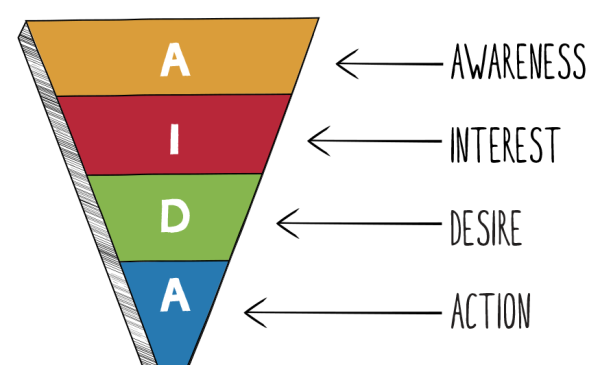What Is Sales Funnel Marketing?

Sales funnel marketing is a process that provides customers with the information they need—when they need it—in order to make a purchasing decision. However, before launching into sales funnel marketing, it is important to understand the sales cycle.
All products and services have a sales cycle. It is measured in the length of time and amount of information customers need before they are ready to make a purchase. For some products—for example, a bottle of cold water at a gas station—the sales cycle is immediate, while for other products—like a new car or other big investment—the sales cycle can be drawn out to weeks or even months.
For these mid- to long-range sales cycles, customers take time to research, read reviews, weigh the pros and cons of competitors, identify strengths of specific brands, and look for special offers, all before they finally make a decision. The longer the sales cycle for your particular product, the larger your sales funnel needs to be to help insure a constant stream of purchases. This is where the four steps of sales market funnel marketing process come into play: Awareness, Interest, Desire, and Action.
Awareness
At the top of the funnel are potential customers who may not yet know they need your product. Think of this part of the sales funnel as your introduction to a prospective customer (prospect). At this stage of the marketing flow, you want to build both brand awareness and product recognition. The goal is to keep the prospect engaged and yearning for more information. One effective marketing tactic to employ here might be display advertising on social media, targeted to specific demographics.
Interest
As prospects become more captivated and begin to engage with you by clicking on display advertisements, they trickle further down into the sales funnel. At this stage, just as they are showing interest and beginning their research, it is important to present them with the unique selling points of your product, any warranties or guarantees you offer, and data regarding your company’s brand reputation. As they are considering their options, ideal marketing tactics include tailored landing pages, case studies or white papers, and blog posts that provide an easily accessible resource for their research.
Desire
Now that a prospect is using your resources as a tool for their own research, they’ve moved even further down the funnel. They are now weighing their options, evaluating competitors, and calculating the product’s cost with special offers. The best tactic at this stage is to have display advertising that reaches them with tempting call-to-action messages. Sometimes, all that’s needed in order for a prospect to transition into a customer is a special discount, free shipping, or extra freebie. Even at this stage, some prospects may still need a bit more time in the funnel. Generally, this is when they are most receptive to retargeting and display ads.
Action
Your goal now is to move the prospect to engage specifically with you—either through a sales team or through a well-designed and written sales page. It is vital that your website provides answers to the top questions your customers ask, and that you address any potential concerns or possible objections upfront. If you have a professional sales team, objections can be handled one-on-one, a wise strategy for higher priced products and those with longer sales cycles.
Remember, once you’ve made the sale, your new customer could become a powerful product or brand ambassador for you. Pay attention to their demographics,—age, gender, location, and buying habits—as these will be the key to finding similar prospects to add to your sales funnel. Actively ask for reviews, and reward referrals; after all, the sales cycle for a warm lead is significantly shorter, and offers fewer objections.
